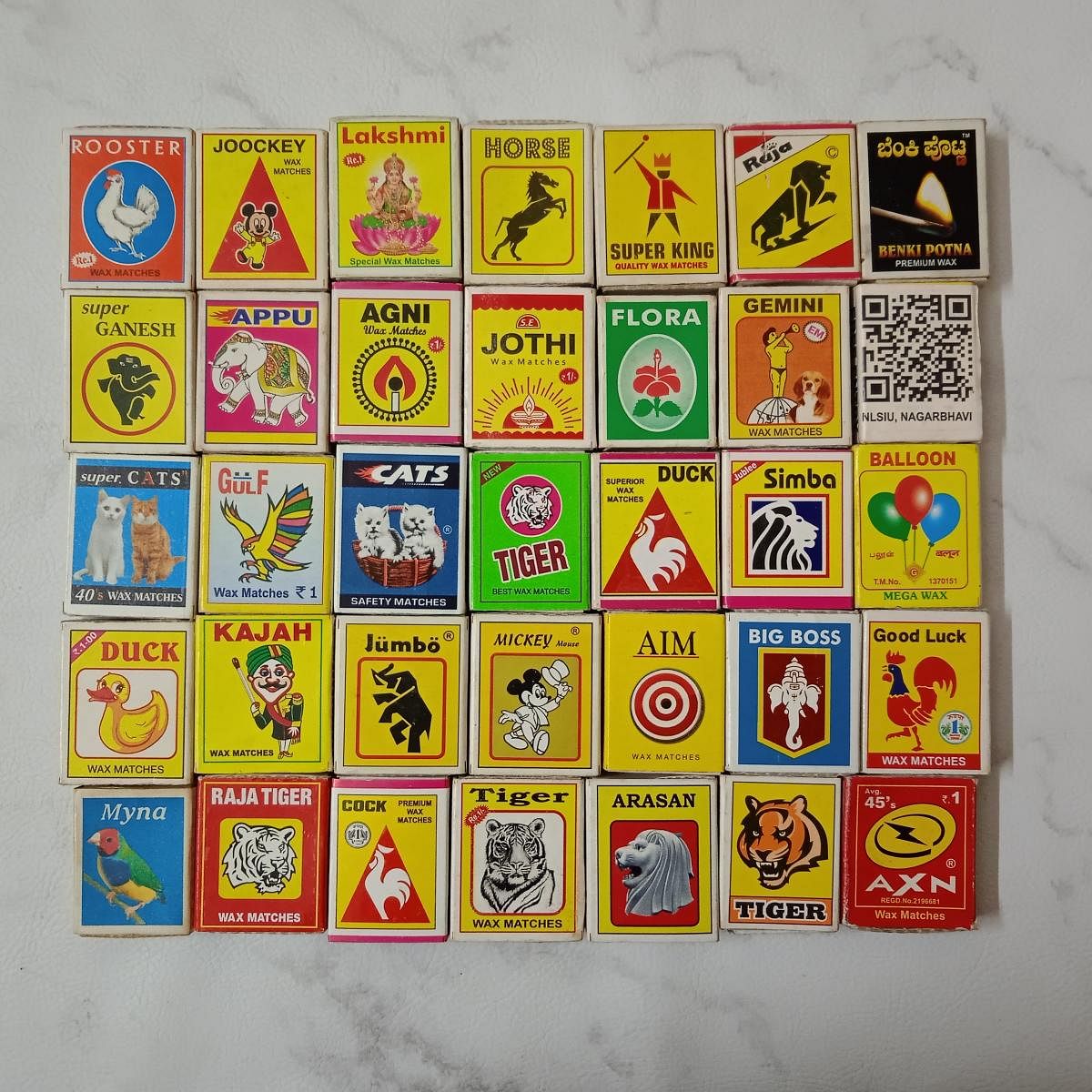
Do you want to be a phillumenist? It is a fancy word for a matchbox collector. Phillumeny is the unusual hobby of collecting matchbox and matchbox labels and other related items. It may not be as popular as Philately or numismatics, but it is a recognised hobby worldwide with some aficionados willing to pay a fancy price for a rare label.
Like stamp collection, a large collection of matchboxes and labels, segregated by themes, can weave fascinating stories and reveal hidden histories. Furthermore, matchboxes are expressions of popular art. One may find them kitschy, but remember, kitsch art by the likes of Andy Warhol and Roy Lichtenstein gained worldwide popularity.
It is undoubtedly an inexpensive hobby, but requires sustained effort to enrich one’s collection. Dylan Joseph, a Bengaluru BPO employee, has been collecting matchboxes since 2015. He picks up matchboxes from small towns all over South India. “At Rs 1 per box, it is perhaps the most inexpensive hobby one can adopt,” he says.
Initially, he wanted to use the labels as decor by putting them under a glass sheet on a coffee table. But soon, his collection grew. “It is a kind of stressbuster for me,” he adds. Seeing his collection took me on a journey of discovery.
Although fire was discovered by man aeons ago, safety matches were invented by Johan and Carl Lundstrom in Sweden in 1852 and the first safety matches were not produced until 1855. In India, matches were first manufactured by Gujarat Islam Match Factory founded in 1875 in Ahmedabad, but there was no commercially successful manufacturer in India before the 1920s. Japanese traders made the first matchboxes in Calcutta (Kolkata) in 1912. In fact, before the First World War, the large Indian market was supplied by Japan, Sweden and other European countries. So, it wouldn’t be surprising if some of the rarest vintage labels are found among Indian collectors. Wimco Ltd was established in 1923 in the name of Western India Match Company. It is an affiliated concern of Swedish Match AB. The older generation may well remember the popular Wimco label on their matchboxes!
Printing trends
A fairly large collection over several decades can reveal changing trends in printing (label), packaging and design. Matchbox collection can be grouped into themes. Some themes are popular such as animals, particularly tigers, elephants, lions, horses, camels, rabbits and cockerels. Images of gods and goddesses, and scenes and characters from mythology were used, (miniature replicas), copied from the paintings of artists like Raja Ravi Varma and his contemporaries.
Matchbox labels express the collective mindset of the people of a particular country or region; for instance, there are gender-indicative labels like ‘Lady with the drums’, ‘The motor girl’ or ’Lotus lady’. Matchboxes have also depicted patriotism and freedom struggles with labels of Shivaji, Chandrashekar Azad, Bhagat Singh, Subhash Chandra Bose, Sarojini Naidu, Gandhi and the Charkha symbol.
The number three appears to be a popular theme with labels like “Three mangoes”, “Three lions”, “Three eggs”, “Three roses”, “Three trees” and “Three Cockerels.” Matchbox labels have carried pictures of film stars from yesteryears such as Suraiya and Noor Jahan to the present day Rajnikanth. They have also often been used as a medium of advertisement.
As many labels carry the names and addresses of the company, one can even work out an industrial map of the matches’ industry. Sivakasi in Tamil Nadu is the largest producer of matchboxes in India. No surprises there. Thoothukudi is sometimes referred to as “Matchless city of matches.” A diverse range of matchboxes, which are manufactured by cottage industries, are found mainly in small towns and villages. These cottage industries are scattered in nondescript villages and towns of Tamil Nadu in the districts of Pudukottai, Virudhunagar, Tirunelveli, Theni, Tiruchirapally and Vellore.
Next time you are able to travel, stop over in a small village or a town; you might just find a matchbox with a unique label.